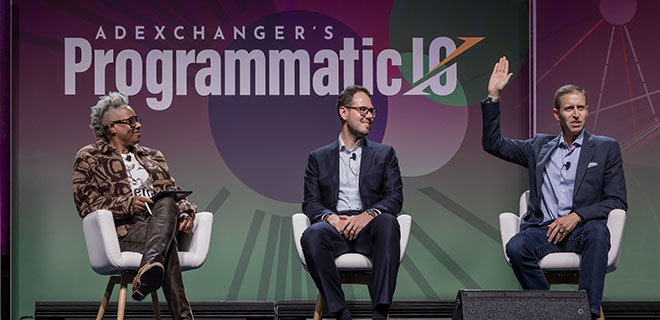
As the world of online ad operations rapidly evolves, remaining at the forefront of advancements will be more important than ever. Change is inevitable, but being left behind is not.
These days the road to success as a publisher depends on who you ask as every publishers journey is unique, but there are lessons we can all learn from those navigating the twists and turns successfully. At AdExchanger’s Programmatic IO on September 26, our own Lynne Johnson facilitated a panel discussion titled “The New Publisher Playbook” with two industry leaders – Mark Howard, Chief Operating Officer, TIME, and Zack Sullivan, Chief Revenue Officer, Future. They offered insight about a world without cookies, scaling your business and the future of privacy.
In a Cookieless Environment, Building Relationships is Key
The ops industry is moving into a future where having the right data will be key to profitability. Industry professionals previously used third-party data, but that strategy must be amended with changing privacy laws. Direct relationships with consumers and partners will be crucial as we advance.
Commerce is a huge part of Future’s business, according to Sullivan. The company’s proprietary tech stack is utilized to track users across their journey to illuminate their intent and path to purchase. Having this data about users and their intent is extremely useful.
“We’re also audience builders. The audience gives us value – we build the brands, they come, it’s a self-perpetuating relationship. The more they come back, the better understanding we have of what they’re doing. Having that relationship is something that only media owners can do,” explains Sullivan.
He adds that reliance on third-party data has led to newfound problems with attribution. Future is building relationships with media owners to close the gap between campaign buying decisions and their outcomes, increasing transparency along the data journey.
Howard says that TIME has multiple business models, including B2B, B2B2C and B2C, which makes data more complicated, says Howard. “What ends up happening is you get a data and analytics loop that allows you to understand the different behaviors, the audiences, and the experiences you’re building within the overall framework. That then helps us inform both the user experiences and some of the editorial experiences that they’re going to help us continue to propel forward,” he shares.
To help understand all of its data, TIME will soon announce a new attribution measurement platform. This platform will create a more holistic story of the data while separating data into buckets of TIME’s various audiences. This will help highlight the outcomes of both campaign and impact metrics that will quantify a return on investment and put the company in a better position to help its partners.
To Scale or Not to Scale… And How?
Most publishers are now facing the challenge of whether to scale their business and how. This is an evolving issue but best practices have begun to emerge.
Sullivan says Future can deliver its partners a large portion of their desired addressable audience using its data solutions. “Internally, we’re increasingly looking at using probabilistic data, then saying, ‘Here’s our first-party data. This is why we’ve got really high confidence in probabilistic matching.’ I think things like cleanrooms don’t scale up at a level that’s good enough right now,” he explains.
Working alongside other publishers will also be a big piece of the data puzzle, for example, by having agreed upon taxonomies at different data levels since there is currently no standardization with taxonomy.
This is where partnership comes in. “If you’re an agency planner, you want to avoid having to publish and plan across 15 different specialist brands. You want to be able to say, ‘I’m targeting these cohorts and these taxonomy segments,’” says Sullivan.
Whether or not to scale has been a question the industry has gone back and forth on for some time now. Howard notes he believes there’s a way for publishers to unite to tackle this issue, not necessarily by forming a coalition, but to share best practices on big issues and go-to-market strategies.
Painting a Picture of the Consumer in a Privacy-Centric Era
As we move into an era where privacy is paramount, we must find new ways to understand online consumer behavior. One solution to getting a clear picture of individual consumers is identity graphs.
A big piece of this puzzle will be the value the consumer gets in exchange for giving you their personal information. Sullivan notes that the detail you collect on users depends on the end goal. For example if you are hoping to drive digital subscriptions, you will need more robust data, but at some point, there are diminishing returns. He advises striving for balance.
Howard says that TIME recently decided not to put any of its content behind a paywall, which makes collecting first-party data more difficult but is ultimately in line with TIME’s overall goals.
Sullivan adds, “We need to determine what data we make available through an open auction RTB environment versus what we want to share into trade marketplaces? That’s the future.”
Attention metrics are also gaining traction as the latest way to track behavior, which Howard says will be the jumping off point to even greater metrics. These can be more directly attributable and will help direct sales outcomes. He says, “Attention is just the next step in the progression of data sophistication and what we can provide. And I think it’s the gateway into a whole new ecosystem.”
No one has all the answers, but industry experts will increasingly need to band together and share best practices to ensure continued success and growth.